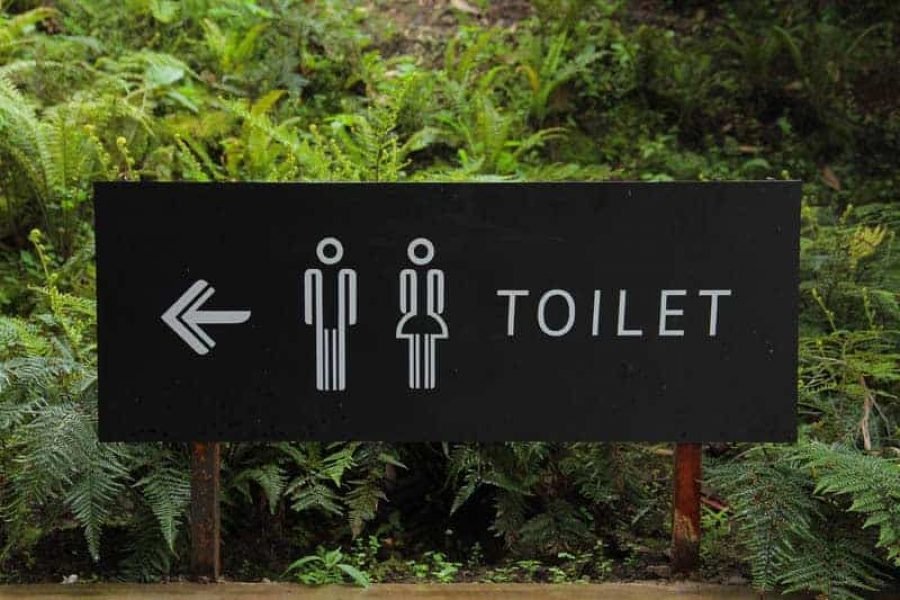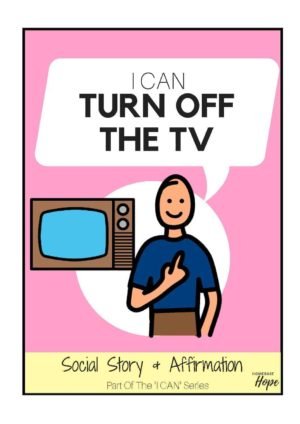Learning to go to the toilet independently is a very significant milestone in a child’s development. In general, children learn to use the toilet between 18 months and 3 years old.
Toileting is a complex task requiring a series of sub-skills. Many children on the spectrum have challenges going to the toilet. They may hold, refuse to go or hide and do their business in their nappy.
Why can’t my child toilet yet?
There can be many reasons why your child cannot use the toilet. Here are a few common reasons I see:
1. Your child has difficulties with transitions. Remember toileting is a massive life transition! Learning to go from doing your ‘business’ in a warm comfy nappy whilst standing up, to sitting on a cold seat above a pool of water is a very different experience!
2. Your child has not yet developed their interoceptive sense. This is a biggie! So listen up. The interoceptive sense is the sense that tells you what your major organs are doing. How do you know when you need to go to the toilet? Well, your bladder sends a signal to your brain telling you that it’s full and needs to be emptied. It’s likely your child gets the signal but for some reason the brain is not making sense of the information and therefore they will have constant accidents no matter how hard they try. This can be very frustrating and embarrassing for a child who is self aware.
3. Your child experiences anxiety. Your child may feel a sense of anxiety even before you open the toilet door. It can bring on a very real uncontrollable meltdown. This anxiety can be triggered by different sensory experiences or the pressure to perform. There experience is real and needs to be respected.

Top 8 Toileting Tips
1. Step By Step Process
Don’t go in with the expectation that your child will ‘get it’ straight away. For many children it takes a very planned step-by-step process. I do encourage parents make the transition from nappies to undies as soon as possible, however this isn’t always achievable. So, if your child is still using a nappy (and is very attached to their nappy), I would suggest you take a graded step-by-step approach. Encourage your child to do their ‘business’ following these steps:
- in their nappy in the toilet room
- with their nappy on whilst sitting on the toilet
- in a loosened nappy whilst sitting on the toilet
- in an completely undone nappy whilst sitting on the toilet
- in an completely undone nappy, with a hole cut out of it whilst sitting on the toilet
- complete removal of the nappy
2. Timed Toileting & Transitions
Set a timer to ensure regular toileting practice. This will set your child up for success. Once the timer goes off it is important to turn what can be a scary experience into something that they will look forward to. Draw on your child’s special interest to make the transition to the toilet fun. If their special interest is trains, announce that the ‘toilet train’ is coming, call “all aboard” and “choo choooooo” all the way to the toilet! When your shift the atmosphere from fear and stress to excitement and comfort, there will be a shift at a physiological level which will help the poo come out more easily!
3. Consider The Sensory Environment
For a child on the spectrum, toileting can be an overwhelming sensory experience. Think about it. The unfamiliar off-putting smells, the splash of water on their bottom, the deeply irritating noises from the fan, hand dryer or flush of the toilet. It could be that they feel unsafe while sitting on the toilet or that the toilet paper feels like sandpaper. How are you to know this? This is what I suggest for the sensory sensitive kids:
- create a ‘birds nest’ by laying toilet paper in the bowl to avoid the unpleasant splash!
- avoid turning on the fan or flushing the button while your child is in the room if they are over sensitive to sounds
- consider the texture of the toilet paper. You may choose to continue to use wet wipes due to the familiarity.
- create a visually stimulating environment that encourages your child to enter the toilet. Think: posters, books and sensory tools.
4. Dress For Success
When teaching your child how to go to the toilet you need to eliminate any unnecessary steps! This means avoiding pants with buttons and zippers, as these can be way too tricky in an ‘emergency’! Opt for elasticised waists, or even better no clothing (where appropriate!)
5. Use A Visual Schedule
Create a visual schedule so your child can become familiar with the steps involved in toiling. It can be as simple as:
- pull pants down
- sit on the toilet
- do wee/do poo
- tear off toilet paper
- wipe bottom
- put toilet paper in toilet
- flush toilet
- wash hands
6. Roleplay With Dolls And Dinosaurs
Use your child’s favourite teddy or character to teach toileting. This can be a great way to engage your child. The idea is to role-play the expected behaviour. Whilst you want to show your child how teddy can use the toilet, you also want to show your child that it is o-kay if teddy has an accident. For example, teddy may say: “Oh no, I did a little wee in my undies. That’s okay. I am going to stop playing in the sandpit and tell the teacher”. Role-play gives you the opportunity to help cement the toileting routine with your child.
7. Make It Fun!
I cannot stress enough how important it is to make the experience a positive one. If your child is stressed they will probably hold their poo and this can cause all sorts of medical problems if done over a long period of time. To make toileting an enjoyable experience I suggest that you:
involve them in the process! Go shopping and get your child to choose their favourite undies!
give them special experiences they can only get when they are on the toilet. For example they can only play a certain game on the i-pad or maybe they have access to a special ‘toilet toy’.
8. Have A Poo Party!
Okay, only kidding! Well, it’s not a bad idea! But don’t be so focussed on the end result you forget to celebrate every little win with your child along the way. It can be a long and tiring journey for both of you, so make sure you celebrate the little milestones along the way. Hugs, kisses and over-excited praise can go a long way!
So remember, it can take time. Set your child up for success and bring a sense of patience and understanding. If you can make it fun – you’re halfway there! Happy toileting!!!








